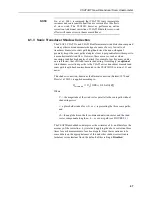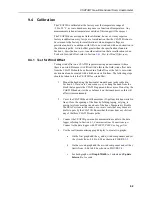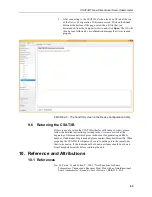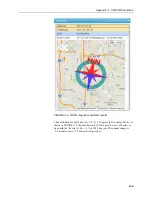
CSAT3B Three-Dimensional Sonic Anemometer
60
between one half and one mesh lines (FIGURE
, right). Secure the wicks to
the transducer with a drop of adhesive, such as super glue.
Replacement top wicks (pn 17388) and bottom wicks (pn 17389) can be
purchased from Campbell Scientific. A complete set of wicks for one CSAT3B
consists of three top wicks and three bottom wicks.
FIGURE 9-1. Proper orientation of sonic top wick (left) and bottom wick
(right)
9.3 Desiccant
To prevent liquid water from coming in contact with the CSAT3B electronics,
the internal humidity must be maintained at non-condensing levels. The
CSAT3B has an on-board relative humidity sensor that continuously monitors
the humidity inside the enclosure. This humidity ranges between 0 and 100%.
As temperature decreases, the capacity of air to hold water also decreases and
the relative humidity will increase even if no additional water has been
introduced into the closed system. As the relative humidity approaches 100%,
condensation will begin to form on the internal surfaces.
The CSAT3B has a cavity to hold a replaceable desiccant canister that removes
water from the air (see FIGURE
). Water molecules will unavoidably
ingress into the electronics over time, so the internal humidity of the CSAT3B
head should periodically be checked. This can be done automatically with a
data logger if the data logger program uses the
CSAT3BMonitor()
instruction
in
CRBasic
, or manually by connecting a CSAT3B to a computer using the
USB cable and then launching the
Device Configuration Utility
. Under the
Settings Editor
tab of the utility, there is secondary tab for
Real-Time Data
,
where the internal humidity measurement will be displayed along with various
other measurements.






























